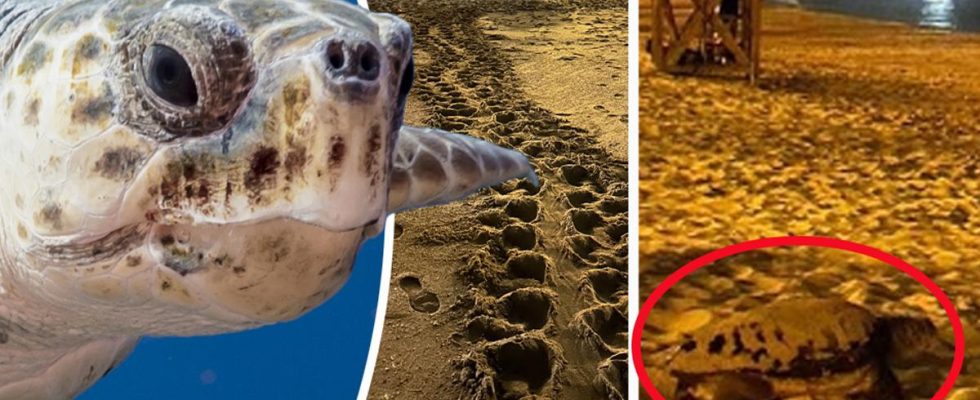Instead of taking a night swim, marine biologist Markus Olsson got to witness history on Mallorca. Photo: Markus Olsson
Swedish marine biologist Markus Olsson witnessed history on Mallorca:
A sea turtle has been seen laying eggs on the island for the first time ever.
106 pieces, to be precise.
– It is indescribable how fantastic it is, he says.
A month ago, Markus Olsson, 29, was in Mallorca for a scientific conference.
After a dinner, he and some friends were just going for a quick night swim.
– But on the beach I see tracks in the sand and near a bush I see something moving, he says.
He quickly realized it was a sea turtle.
The marine biologist in him immediately awoke and he “set the stage” to protect the animal.
– I made sure people didn’t get too close. She had just laid her eggs and was covering the nest. Then we followed her as she returned to the sea.
In the middle of the night, he emailed the information to a conservation organization in Mallorca.
And the next morning it was full on at the beach.
“Incredibly large”
Police had cordoned off the area around the nest where the female, of the species loggerhead turtle (Caretta caretta), had laid a whopping 106 eggs.
– There were lots of guards around the fence while staff were there working with different types of measurements, such as the temperature of the sand.
Because it turned out that never before in history had a sea turtle been observed laying eggs on Mallorca.
– It is incredibly large. I was witnessing history, without knowing it.
FACT Endangered
All seven species of sea turtles are on the CITES list (Convention of International Trade in Endangered Species), according to Appendix 1. This means that a special permit is required to trade in these species. Two of the seven species are classified as critically endangered, two are classified as critically endangered and another two are classified as vulnerable according to the International Union for Conservation of Nature, IUCN.
At present, it is humans who pose the greatest threat, primarily through fishing as by-catch, environmental destruction, pollution and coastal settlements.
Source: WWF
Read moreThe theory: “Climate refugees”
Behind the unique event, however, there seems to be a grim reality.
The sea turtle, which is an endangered species, is now believed to have moved to the western parts of the Mediterranean to lay eggs due to temperature changes in the eastern parts of the sea.
– So the question becomes whether it got there because of climate change. Then they become climate refugees, says Markus Olsson.
Miquel Mir, regional environment minister, is also aware that higher sea temperatures have changed the movement patterns of sea turtles.
– Therefore, it is a new climate challenge that comes to us as a result of the climate crisis we are suffering from, says Mir to the local newspaper Majorca Daily Bulletin.
May come back
Now it is eagerly awaited in Mallorca for the eggs to hatch. It usually takes six to eight weeks.
Close to half of the eggs have been taken to a clinic for artificial incubation.
– They are also waiting to see if the female will return.
If all goes well, that the females from the eggs can survive, Marcus sees it as quite likely that they too can lay eggs on Mallorca in the future.
– Sea turtles often return to the same beach where they were hatched, says Markus Olsson
– In retrospect, I have understood the meaning of this event. I just feel so much joy and happiness about what I have been through.
